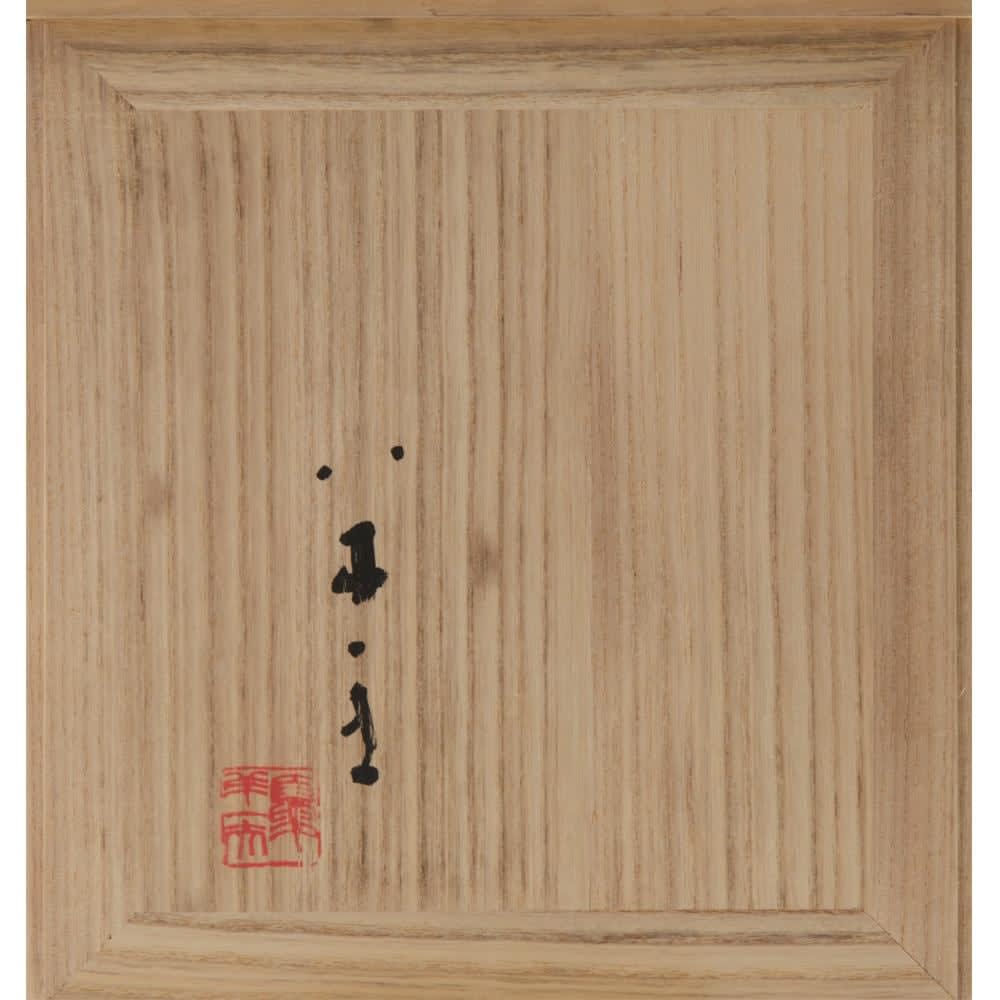Yagi Kazuo (1918–1979)
Space of Applause
Blackware
With a box signed by the artist
D19.7 x W17.4 x H21.7 cm
With a box signed by the artist
D19.7 x W17.4 x H21.7 cm
Further images
Literature
Collection of Works by Yagi Kazuo. Tokyo: Kodansha, 1980.
Yagi Kazuo’s later years were a productive time that saw him embarking on the ‘Book’ series in 1971 and the ‘Hand’ series in 1974. These focused less on the objects themselves but rather on the aggregated movements of ‘book’ or ‘hand.’ The progenitor of the ‘Book’ series was Page 1 (Museum of Modern Ceramic Art, Gifu), which features a page sticking up from a voluminous book. The work captures a single moment in the continuous action of reading a book and turning a page. In contrast, the ‘Hand’ works express the whole series of interconnected movements involving in bringing right and left hands together to applaud.
Yagi has taken a moment from our daily lives, namely turning the page of a book, and turned it into a work of art. Likewise, we could say the actions involved in clapping have been aggregated and reinterpreted as Space of Applause. Page 1 developed into the ‘Book’ series, while Space of Applause gave rise to the ‘Hand’ series. Space of Applause congeals the continuous movements made by both hands when applauding. This work’s nature as the fixed form of several interlinked movements is symbolized by the way the nails of the left and right thumbs form one contiguous left-right whole. Whereas the continuum of time involved in turning a page is expressed by leaving just one page sticking up from the book, the temporal continuity of the action of applause is expressed in one congealed form that represents these interlocking movements. It affords us a glimpse of action as a continuum, thus revealing the unity of movement. The hand continuum also provides a glimpse into the dynamic motion of clapping. In this way, Yagi using concrete sculptural forms to show us abstract concepts of time.
As we can see in Light Slippings Off the Cheek and Form of Greeting, Yagi incorporated quotidian sensibilities into abstract forms in his later works, particularly those from 1977 onwards.
Yagi Kazuo (ceramist; 1918–1979)
Ceramist from Kyoto. As a co-founder of Sodeisha (Crawling through Mud Association), Yagi was largely responsible for establishing and popularizing non-functional objects as a major category of postwar Japanese ceramic art. Working in Shigaraki clay for much of his career, Yagi later turned to “black pottery” (kokuto). He taught at the Kyoto City University of the Arts.
Yagi has taken a moment from our daily lives, namely turning the page of a book, and turned it into a work of art. Likewise, we could say the actions involved in clapping have been aggregated and reinterpreted as Space of Applause. Page 1 developed into the ‘Book’ series, while Space of Applause gave rise to the ‘Hand’ series. Space of Applause congeals the continuous movements made by both hands when applauding. This work’s nature as the fixed form of several interlinked movements is symbolized by the way the nails of the left and right thumbs form one contiguous left-right whole. Whereas the continuum of time involved in turning a page is expressed by leaving just one page sticking up from the book, the temporal continuity of the action of applause is expressed in one congealed form that represents these interlocking movements. It affords us a glimpse of action as a continuum, thus revealing the unity of movement. The hand continuum also provides a glimpse into the dynamic motion of clapping. In this way, Yagi using concrete sculptural forms to show us abstract concepts of time.
As we can see in Light Slippings Off the Cheek and Form of Greeting, Yagi incorporated quotidian sensibilities into abstract forms in his later works, particularly those from 1977 onwards.
Yagi Kazuo (ceramist; 1918–1979)
Ceramist from Kyoto. As a co-founder of Sodeisha (Crawling through Mud Association), Yagi was largely responsible for establishing and popularizing non-functional objects as a major category of postwar Japanese ceramic art. Working in Shigaraki clay for much of his career, Yagi later turned to “black pottery” (kokuto). He taught at the Kyoto City University of the Arts.





